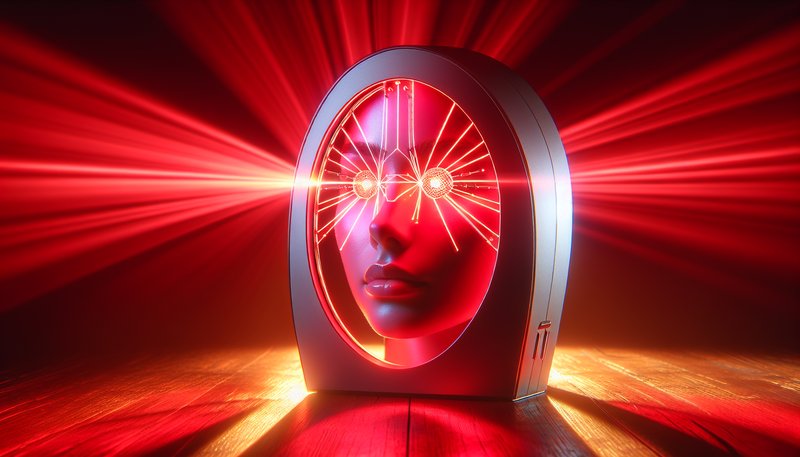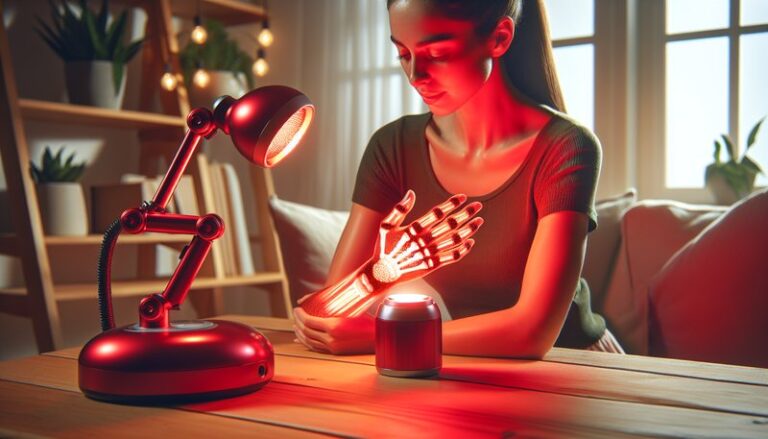Can Red Light Therapy Improve Vision?
Is it possible that shining a specific type of light on your eyes could enhance your vision?
In recent years, red light therapy (RLT) has gained attention for its potential benefits, including claims that it may improve vision. This article will delve into what red light therapy is, its purported benefits for vision, the feasibility of using it for eye health, considerations to keep in mind, alternative therapies, and frequently asked questions regarding this intriguing topic.
Key Takeaways
- Red light therapy may stimulate cellular activity and improve overall eye health.
- Preliminary studies suggest potential benefits for certain eye conditions, although research is still in its infancy.
- Considerations such as the type of device used and safety protocols are vital before considering red light therapy for vision improvement.
What is Red Light Therapy?
Red light therapy is a non-invasive treatment that uses low-level wavelengths of red light to promote healing and recovery in tissues. Originally developed for skin-related issues, it has since been explored for various health benefits, including pain relief and inflammation reduction.
The mechanism behind red light therapy involves photobiomodulation, where light stimulates mitochondrial activity in cells, leading to increased energy production and cellular repair. This process is believed to enhance healing, reduce inflammation, and may even support eye health.
Research is starting to explore the impact of RLT on eye conditions, such as age-related macular degeneration and diabetic retinopathy.
What are the Benefits of Red Light Therapy for Vision?
The advantages of red light therapy extend beyond skincare, with emerging studies suggesting potential benefits for vision improvement.
Enhanced Cellular Repair
Red light therapy can stimulate the repair and regeneration of cells in the retina. This is crucial for maintaining eye health and mitigating damage that can lead to vision loss.
Reduction of Inflammation
Chronic inflammation is a factor in many eye diseases. RLT’s anti-inflammatory effects may help reduce inflammation in the eyes, providing relief for conditions like uveitis.
Improved Blood Flow
Increased circulation to the eye can enhance nutrient delivery and waste removal, which is vital for maintaining healthy vision and overall eye function.
Learn the details in “Red Light Therapy for Wrinkles?”
Potential for Slowing Eye Disease Progression
Initial studies indicate that RLT may slow down the progression of certain degenerative eye diseases. Although more research is needed, this possibility is promising.
Is it Possible to Improve Vision with Red Light Therapy?
The feasibility of using red light therapy specifically for improving vision is still being researched. While many users report positive outcomes, scientific backing is limited, and further clinical trials are necessary to establish concrete results.
What are the Advantages of Using Red Light Therapy for Vision?
- Non-invasive treatment: Unlike surgical interventions, RLT is non-surgical and involves minimal risks.
- Convenience: RLT devices can often be used in the comfort of your home, making it a convenient option.
- Holistic health benefits: Many individuals experience additional health benefits, such as improved skin tone, enhanced mood, and better sleep.
What are the Disadvantages of Using Red Light Therapy for Vision?
- Lack of regulatory oversight: Many devices on the market are not FDA-approved for eye treatment, leading to variability in quality.
- Transient effects: Benefits may diminish if the therapy is not continued regularly.
- Potential for misuse: Incorrect usage of RLT devices, such as improper distance or exposure time, can lead to adverse effects.
What are the Things to Consider Before Trying Red Light Therapy for Vision?
Before embarking on this journey, potential users should weigh several important factors.
Consult Your Eye Care Professional
Always consult with ophthalmologists or optometrists before starting red light therapy. They can provide guidance based on your specific eye health needs.
Device Selection Matters
Quality matters when selecting an RLT device. Look for devices that are FDA-approved or have undergone rigorous testing for safety and efficacy.
Individual Medical History
Consider your individual medical history and any pre-existing conditions that might interact with light therapy. Discuss any concerns with your healthcare provider.
Discover our review on Does Red Light Therapy Boost Vitamin D?
What are the Alternatives to Red Light Therapy for Vision?
While red light therapy shows promise, several alternatives claim to foster better eye health.
** Nutritional Support**
Adequate intake of nutrients like omega-3 fatty acids, vitamins C and E, and lutein can support eye health and potentially improve vision. Foods rich in these nutrients include leafy greens, fish, nuts, and seeds.
Vision Therapy
For people with specific vision problems, structured vision therapy programs can help improve visual function through exercises that strengthen eye coordination and processing skills.
Protective Eyewear
Using UV-blocking sunglasses and blue light glasses can prevent further damage from sunlight and screens, reducing the risk of age-related vision issues.
Conclusion: Is it Recommended to Use Red Light Therapy for Vision?
While red light therapy appears promising for various health benefits, including potential improvements in vision, the research is still early-stage. Consulting with a qualified eye care professional is crucial to consider personalized risks and benefits. If integrated thoughtfully and safely, RLT may complement other eye health strategies.
Frequently Asked Questions
Can red light therapy be harmful to the eyes?
Currently, there are no widespread reports of harmful effects when used correctly; however, improper use can lead to discomfort or vision problems. Always follow manufacturer guidelines and consult professionals.
How long does it take to see results from red light therapy?
Results can vary significantly. Some individuals report immediate effects, while others may take weeks or months of regular use to notice improvements.
Is red light therapy suitable for everyone?
Not necessarily. Individuals with specific eye conditions or diseases should consult with healthcare providers to ensure safety.
Are there any scientific studies supporting the efficacy of red light therapy for vision?
Yes, preliminary studies show promise; however, the research is ongoing. Peer-reviewed, large-scale clinical trials are necessary for conclusive evidence.
How often should I use red light therapy for potential vision improvement?
Guidelines can differ. Some recommendations suggest sessions once or twice daily, but it’s essential to tailor this to individual needs and professional advice.






